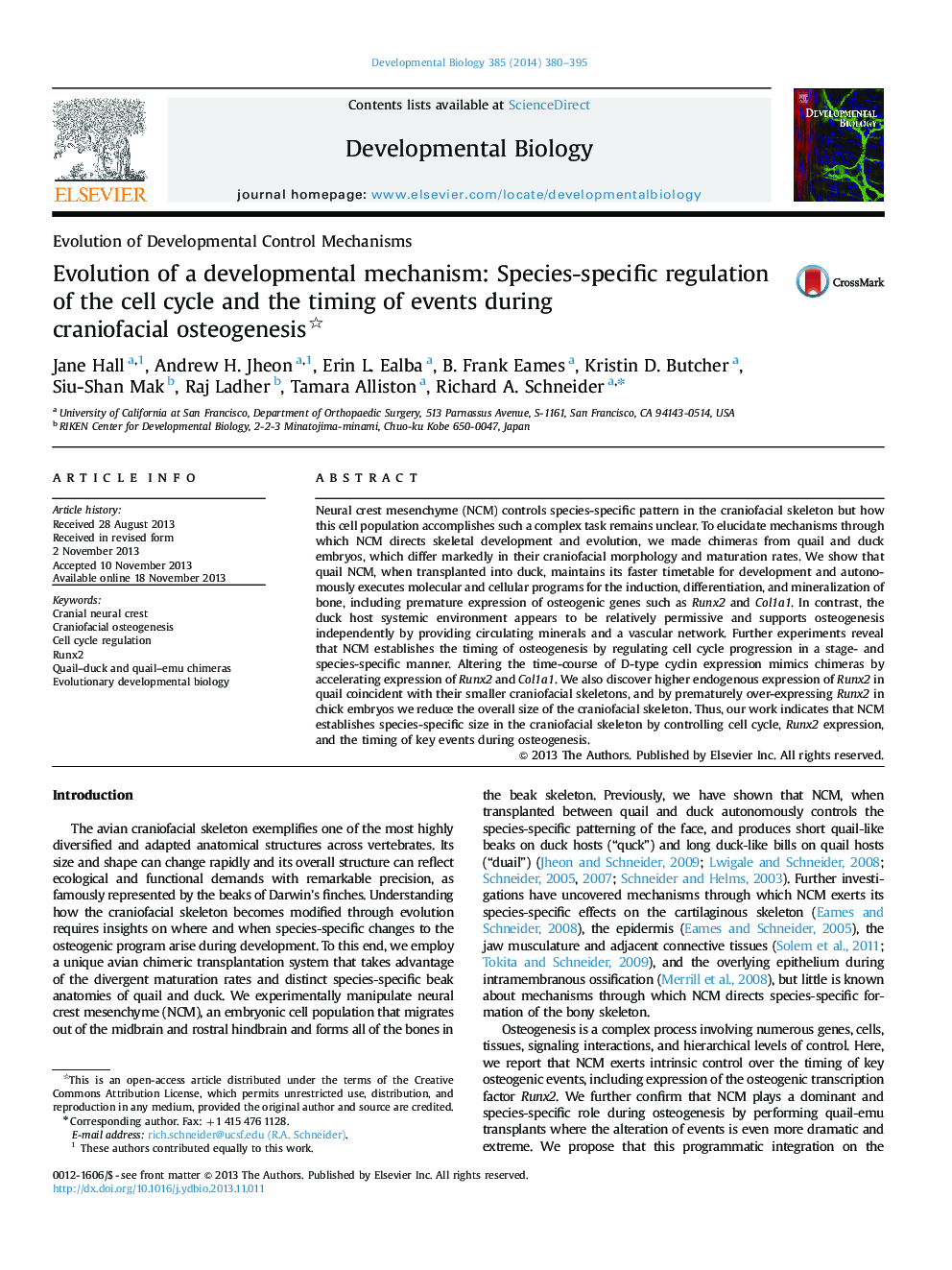| Article ID | Journal | Published Year | Pages | File Type |
|---|---|---|---|---|
| 10931847 | Developmental Biology | 2014 | 16 Pages |
Abstract
Neural crest mesenchyme (NCM) controls species-specific pattern in the craniofacial skeleton but how this cell population accomplishes such a complex task remains unclear. To elucidate mechanisms through which NCM directs skeletal development and evolution, we made chimeras from quail and duck embryos, which differ markedly in their craniofacial morphology and maturation rates. We show that quail NCM, when transplanted into duck, maintains its faster timetable for development and autonomously executes molecular and cellular programs for the induction, differentiation, and mineralization of bone, including premature expression of osteogenic genes such as Runx2 and Col1a1. In contrast, the duck host systemic environment appears to be relatively permissive and supports osteogenesis independently by providing circulating minerals and a vascular network. Further experiments reveal that NCM establishes the timing of osteogenesis by regulating cell cycle progression in a stage- and species-specific manner. Altering the time-course of D-type cyclin expression mimics chimeras by accelerating expression of Runx2 and Col1a1. We also discover higher endogenous expression of Runx2 in quail coincident with their smaller craniofacial skeletons, and by prematurely over-expressing Runx2 in chick embryos we reduce the overall size of the craniofacial skeleton. Thus, our work indicates that NCM establishes species-specific size in the craniofacial skeleton by controlling cell cycle, Runx2 expression, and the timing of key events during osteogenesis.
Related Topics
Life Sciences
Biochemistry, Genetics and Molecular Biology
Cell Biology
Authors
Jane Hall, Andrew H. Jheon, Erin L. Ealba, B. Frank Eames, Kristin D. Butcher, Siu-Shan Mak, Raj Ladher, Tamara Alliston, Richard A. Schneider,
